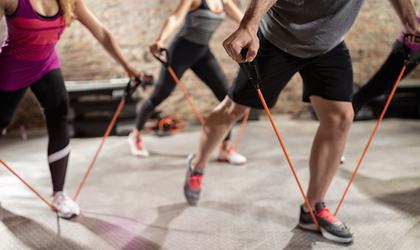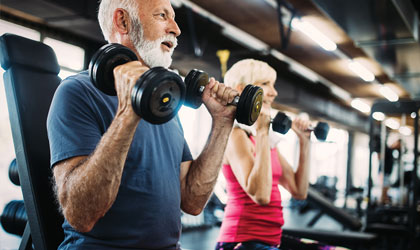
Exercise is important at any age, although especially so for teenagers and those over 50. During these key life stages, your body goes through a number of unique stresses and challenges that can be resolved, or at least remedied, through exercise. So to give you some guidance on the best kinds of exercise to stay healthy at each stage, we’ve put together this helpful guide.
Exercising teens
According to one international study in 2016, British children are among the least active in the world. But with the World Health Organisation recommending teens exercise for at least one hour each day, how can we equip our teenagers with healthy habits that last from adolescence to adulthood?
Why do teenagers need exercise?
Regular exercise offers countless physical and emotional benefits for teenagers. Not only does it help control weight and support bone health, but it’s a great way to relieve stress, boost confidence and release feel-good endorphins. This comes in particularly handy when battling the hormonal imbalances that come with puberty, and can often lead to increases in stress and anxiety. It’s a useful weapon for tackling the more problematic symptoms of puberty, too, such as flagging energy levels, erratic mood and decreased motivation.
Best exercises for teenagers
According to the NHS, teenagers should aim for 60 minutes of exercise every day.i While aerobic exercises – like football or netball – support heart health and improve oxygen delivery to all body parts, strength training will protect joints and prevent injury. To meet the recommended exercise goal, there are plenty of ways to fill days with more activity. Teens can walk, bike or skate to and from school; do some labour-intensive chores, such as sweeping and deep cleaning; or simply take the dog for a long walk.
Expert advice: Teenagers shouldn’t lift heavy weights before the age of 16, as their bones and muscles are still developing.
Exercise for 50+
Physical activity offers a wealth of health benefits for the over fifties. Alongside enhancing emotional wellbeing, improving sleep and minimising the symptoms of chronic conditions, a well-rounded fitness routine can support weight management and independence. It really is the secret to thriving in your golden years.
Best exercises for over 50’s
Aerobic activity
Generally, you should aim for 20-minute bursts of aerobic exercise, 3-5 times, each week. Whether it’s brisk walking, swimming, jogging, cycling or dancing, the idea is to get your heart pumping…fast! If you’re out of shape, always begin with small, manageable goals.
Resistance training
Strength training helps to build and maintain muscle density, which can inevitably decline with age. Focus on conditioning all the major muscle groups – legs, arms and shoulders – for 20 minutes 2-3 times per week.
Stretching
Incorporating stretching-based exercise into your weekly regime will support flexibility and balance, thereby bolstering agility and helping avoid injury in later life. Yoga, Pilates and Tai Chi are brilliant mobility-increasing activities that come with the added bonus of enhancing emotional health, too.
Ensuring that you stay active through these key life stages can equip your body for a happy and healthy life! For even more health information just like this, feel free to visit our Health Library our Pharmacy site or why not have a look further around our active lifestyle section on Our Blog.
References:
-
NHS Guidelines. Physical activity guidelines for children and young people. (2018). Available online: https://www.nhs.uk/live-well/exercise/physical-activity-guidelines-children-and-young-people [Accessed 22 Apr. 2019].
You Might Also Like

Keri
Keri Filtness has worked in the Nutrition Industry for 19 years. She is regularly called upon for her professional comments on health and nutrition related news. Her opinions have been featured by BBC3, Prima, Vitality, The Mirror, Woman’s Own and Cycling Weekly, amongst others. She has also worked one to one with journalists, analysing their diets and health concerns and recommending changes and additions, where appropriate.
View More


